The AFRLSBO works to facilitate partnerships between the
Laboratory and small businesses, ensuring fair and equitable access to contracting opportunities. AFRL spends approximately $3 billion annually with small businesses.
This site represents the collaboration of AFRL Small Business Office and Wright Brothers Institute in order to connect small businesses to resources, contacts and events all along their journey to working with the Air Force.
The Air Force Research Laboratory (AFRL), on behalf of the DAF, developed the Air Force and Space Force Science and Technology (S&T) Tech Connect, a service to connect potential partners with DAF science and technology experts and opportunities.
Midwest at Purdue University is a pilot initiative to create a new science and technology ecosystem in which partners from universities, businesses of all sizes, other government agencies, and venture capitalists help the lab research and accelerate high-risk case studies. The Regional Networks aim to leverage research, translation, and workforce development successes across the country, while also integrating stakeholders to encourage S&T exchanges and drive meaningful innovation.
Regional Network Mid-Atlantic at Cornell University helps identify barrier-breaking innovations for the Air Force and Space Force and together advances them towards commercialization leveraging regional academic, government, corporate, startup, and venture members, programs and assets.
Innovation doesn’t happen in a vacuum. Our ecosystem makes it easy to connect with experts, access resources, and find opportunities inside and outside the AFRL.
The AFRLSBO works to facilitate partnerships between the
Laboratory and small businesses, ensuring fair and equitable access to contracting opportunities. AFRL spends approximately $3 billion annually with small businesses.
This site represents the collaboration of AFRL Small Business Office and Wright Brothers Institute in order to connect small businesses to resources, contacts and events all along their journey to working with the Air Force.
The Air Force Research Laboratory (AFRL), on behalf of the DAF, developed the Air Force and Space Force Science and Technology (S&T) Tech Connect, a service to connect potential partners with DAF science and technology experts and opportunities.
Midwest at Purdue University is a pilot initiative to create a new science and technology ecosystem in which partners from universities, businesses of all sizes, other government agencies, and venture capitalists help the lab research and accelerate high-risk case studies. The Regional Networks aim to leverage research, translation, and workforce development successes across the country, while also integrating stakeholders to encourage S&T exchanges and drive meaningful innovation.
Regional Network Mid-Atlantic at Cornell University helps identify barrier-breaking innovations for the Air Force and Space Force and together advances them towards commercialization leveraging regional academic, government, corporate, startup, and venture members, programs and assets.
The AFRL SBO consists of experienced government representatives located at several Air Force Bases and sites around the country. For questions related to specific acquisitions or opportunities, please contact the AFRL Technology Directorate’s Small Business Professional listed on the map below or fill out our online contact form.

The 11 AFRL technology directorates focus on different technological capabilities and innovations, with research sites located around the country. They play a crucial role in fostering innovation for small businesses, providing collaboration, funding, and networking and partnership opportunities, plus access to cutting-edge research and facilities.

The 711th Human Performance Wing (711 HPW) is a unique combination of the Human Effectiveness Directorate (RH) and the US Air Force School of Aerospace Medicine (USAFSAM). The synergies of combining the ideas, resources and technologies of these units position the 711 HPW as a world leader in the study and advancement of human performance.
Locations:
The Air Force Research Laboratory’s Human Effectiveness Directorate is a key component of the 711th Human Performance Wing. The directorate is composed of a diverse group of scientists and engineers studying developing technologies specific to the human element of warfighting capability. We are leading the Department of the Air Force in its human-centered research, and we integrate biological and cognitive technologies to optimize and protect the Airman and Guardian’s capabilities to Fly, Fight, and Win in Air, Space, and Cyberspace.
Locations:
The Aerospace Systems Directorate brings together world-class facilities including a fuels research facility, structural testing labs, compressor research facility, rocket testing facilities, supersonic and subsonic wind tunnels, flight simulation lab, and many other cutting-edge research labs. Among the technologies in development in the Aerospace Systems Directorate are scramjet engines, alternative fuels, unmanned vehicles, hypersonic vehicles, collision avoidance and aircraft energy optimization.
Locations:
AFOSR continues to expand the horizon of scientific knowledge through its leadership and management of the Department of the Air Force’s basic research program. As a vital component of the Air Force Research Laboratory (AFRL), AFOSR’s mission is to discover, shape, champion, and transition high risk basic research to profoundly impact the future Air and Space Force. AFOSR accomplishes its mission by cultivating scientific breakthroughs into world-class solutions to boldly go where no science has gone before. The FUTURE begins with Basic Research!
Locations:
AFWERX brings cutting edge American ingenuity from small businesses and start-ups to address the most pressing challenges of the DAF. The four core arms of AFWERX – AFVentures, Spark, Prime and SpaceWERX – serve to expand the defense industrial base for advanced technologies, empower Airmen and Guardian talent, and drive faster technology transition to operational capability. AFWERX teams internationally across academia, industry and government to develop technology, expand talent and transition dual-use capabilities. Also check out the AFWERX SBIR/STTR Front Door. Their search platform, IGNITE, is for small businesses that have secured previous DAF Small Business Innovation Research (SBIR) or Small Business Technology Transfer (STTR) awards.
Locations:
AFRL’s Directed Energy Directorate is the Department of the Air Force’s Center of Expertise for directed energy and optical technologies., the Directorate develops and transitions technologies in four core technical competencies: laser systems, high power electromagnetics, weapons modeling and simulation, and directed energy and electro-optics for space superiority.
Locations:
The Information Directorate (RI) is the Air Force’s and nation’s premier research organization for Command, Control, Communications, Computers, and Intelligence (C4I) and Cyber technologies. The directorate explores, prototypes, and demonstrates high-impact, affordable and game-changing technologies. These technologies transform data into information and subsequently knowledge for decision makers to command-and-control forces. This knowledge gives our air, space and cyberspace forces the competitive advantage needed to protect and defend the nation.
Locations:
The Air Force Research Laboratory’s Materials and Manufacturing Directorate develops materials, processes, and advanced manufacturing technologies for aircraft, spacecraft, missiles, rockets, and ground-based systems and their structural, electronic and optical components. Air Force product centers, logistic centers, and operating commands rely on the directorate’s expertise in materials, nondestructive inspection, systems support, and advanced manufacturing methods to solve system, expeditionary deployment, and operational challenges. To find out more about the Materials and Manufacturing Directorate.
Locations:
AFRL’s Munitions Directorate (RW) is responsible for developing superior weapons technologies that are effective and affordable for our warfighter. We are committed to providing the technologies that will enable our warfighters to win in all domains, and we are actively looking at new technologies to stay ahead in a rapidly advancing tech driven world. We value our partnerships with industry, academia, and government partners, as we continue to transition important technologies to the warfighter that help build a more lethal and ready Air Force and Space Force.
Locations:
The Sensors Directorate focuses on affordable sensor and countermeasure technologies for reconnaissance, surveillance, precision engagement and electronic warfare systems. The goal is to provide robust sensors and adaptive countermeasures that guarantee complete freedom of air, space and cyber operations for our forces, and deny these capabilities to our adversaries. Core technology areas include radio frequency and electro-optical sensing, electromagnetic spectrum warfare, multi-domain sensing autonomy, resilient mission systems, and enabling devices and components.
Locations:
From developing the latest in space component technology to flying state-of-the-art satellite experiments, AFRL ensures that the United States and its allies maintain space superiority. AFRL’s Space Vehicles Directorate, the Air Force’s center of excellence for space research, develops and transitions technologies that provide space-based capabilities to the nation. AFRL’s scientists and engineers lead premier spacecraft programs.
Locations:
The Functional Directorates are responsible for providing specialized support in various capacities of Laboratory operations, strategic direction and business functions. The Functional Directorates include Contracting (PK), Small Business (SB), Engineering & Technical Management (EN), Inspector General (IG), Operations (DO), Public Affairs (PA), Digital Capabilities (ID), Financial Management & Comptroller (FM), Judge Advocate (JA), Personnel (DP), Safety Office (SE), and Strategic Partnering (SP).
Department of the Air Force Technology Transfer & Transition (DAF T3) Program. The Air Force T3 Mission is to facilitate the implementation of Air Force innovative technologies in products and services to benefit the warfighter and the public, while supporting Air Force research through collaborative partnerships.
When your focus or goals are local, you need a partner that understands the nuances of your region. Connect with organizations headquartered in the North, South, West or Midwest.
We partner with Partnership Intermediaries (PIs), or organizations that work with small businesses to broaden their opportunities with the AFRL. Partnership intermediaries hold PIAs, or Partnership Intermediary Agreements, that allow them to engage small businesses on behalf of the government to accelerate technology transfer and licensing.

The Academic Partnership Engagement Experiment (APEX) cultivates innovation by expanding the American research enterprise for the USAF.
The United States government provides resources and tools to aid small businesses who are starting the defense contractor process or are actively defense contractors.
We have forged connections with several higher-learning institutions that promote innovation and technological advancement in partnership with the AFRL.
Tap into industry-specific organizations to connect with other small business owners facing the same challenges and opportunities as you.
We’re here to help you tackle the challenges of business growth. Learn how to get started with government contracting.
Already Plugged into the Network?
